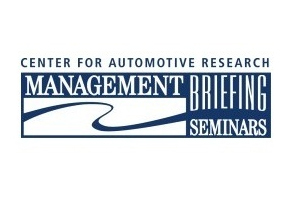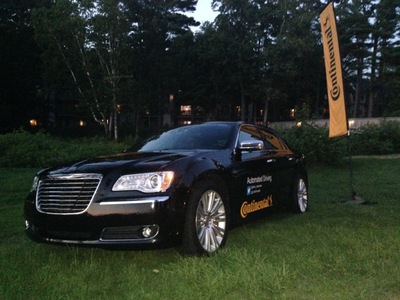CENTER FOR AUTOMOTIVE RESEARCH MANAGEMENT BRIEFING SEMINARS – DAY ONE
 |
By Steve Purdy
The Auto Channel
Michigan Bureau
 |
The annual gathering of auto industry movers and shakers in pristine northern Michigan is now in its 52nd year. Beginning with barely more than a couple dozen execs at a luxury hotel in downtown Traverse City, the conference now fills the massive Grand Traverse Resort with close to 1,000 participants and their families. While the families play in the pool and explore this beautiful resort area the conferees spend their days contemplating the future of the always-challenging automobile business. Your TAC team is here to gather tidbits of news and insights to help us all understand where the industry is going.
The notoriously cyclical automobile industry reached a record peak in production and sales of U.S. automobiles and light trucks of just over 17 million units last year after recovering from the deepest slump in modern history just eight years ago. Analysts expect nearly the same level of production for this year. But where will it go from here? Headwinds loom to challenge the whole concept of individual mobility including generational changes in values and expectations around owning and driving ones own car. We’ll get some insights here this week.
Michigan lieutenant governor Brian Calley opened the discussion of one central topic - the shortage of people to fill the plethora of specialized jobs at automakers, suppliers and support businesses. High-tech manufacturing requires more than just a high-school diploma and many of the engineering jobs going unfilled require specialization. But, as Mr. Calley suggested, many companies can transcend the problem by providing their own training if only they could find enough people with a good work ethic. Another source of optimism centers on increasing efforts to offer apprenticeships and vocational training for these demanding manufacturing jobs, but engineering talent remains a near-critical need.
Center for Automotive Research president and CEO Jay Baron noted the desperate need for tool-and-die talent. He said the number of companies in this realm has slumped by a third in recent years as most of that kind of work ends up being outsourced to companies in other countries. Part of the solution, both Mr. Baron and the lieutenant governor agree, may be cultural, that is, having more respect for hand-on kinds of skill training instead of expecting our young people to pursue just academic credentials.
We see more commiseration around the dismal state of our educational system in the U.S. regarding what has become universally known as STEM education – that is, science, technology, engineering and math. We’re importing more of these people from other parts of the world, but with political hand-wringing about immigration those options become even more a problem. That challenge is not just abstract. Here at MBS tier-one supplier Cooper Standard provides a science fair for the kids including hands-on demonstrations, experiments and career talks. To paraphrase Willie Nelson, “Mommas don’t let your children grow up to be cowboys. Don’t let ‘em pick guitars and drive them ol’ trucks. Make ‘em be engineers and scientists and such.”
Much attention was paid today on issues around manufacturing. Perhaps the most intriguing presentation was by president of Toyota Motor Manufacturing West Virginia, Leah Curry. Her plant makes hundreds of thousands of engines and transmissions per year to supply a variety of Toyota assemble plants around the U.S. The West Virginia plant recently underwent drastic, $400 million modernization that incorporated the best of current thinking about building of vehicles components. Not only were they able to reduce the input of resources by 20% the performance of the finished product was enhanced. “It is smarter manufacturing,” said Ms. Curry.
The highlight of day one was the arrival of two automated vehicles that started out in downtown Detroit, then crossed through the tunnel to Windsor for a drive up the Canadian side of the St. Clair River to Sarnia, back to the U.S. side across the Blue Water Bridge to Port Huron arriving in Traverse City just as the busy bartenders were pouring drinks for the day’s afterglow reception under the white tent. That drive represents the first cross-boarder automated vehicle drive. The drive was organized to punctuate a memorandum of understanding between Michigan and the Canadian province of Ontario to promote the growth and advancement of autonomous transportation. The ‘drivers’ of these stage 4-capable vehicles (meaning they only require human oversight and occasional intervention) say the cars did all the driving most of the time.
Stay tuned for more reports from the Center for Automotive Research’s annual Management Briefing Seminars.
© Steve Purdy, Shunpiker Productions, All Rights Reserved



